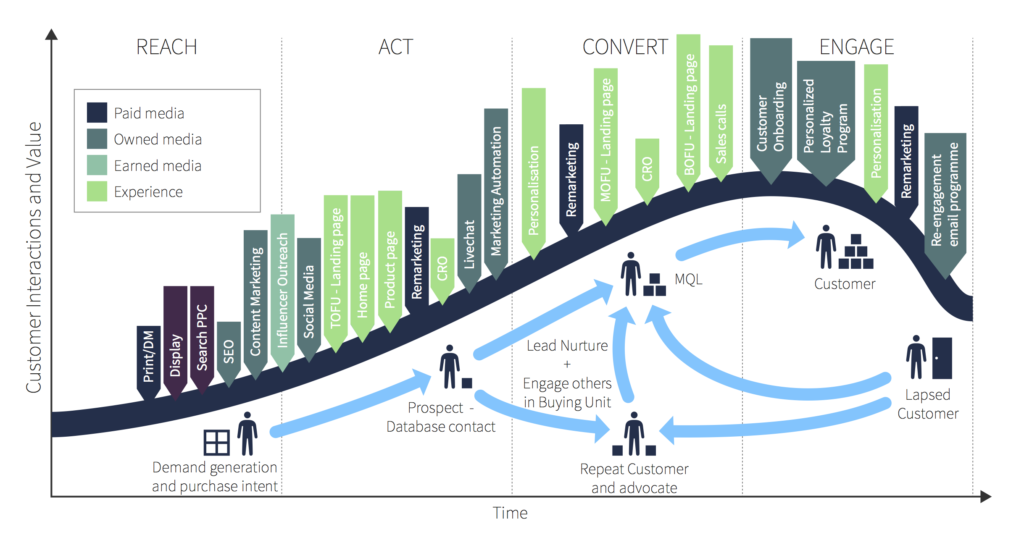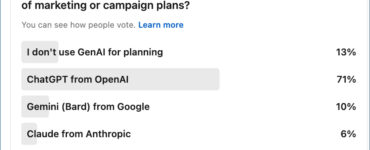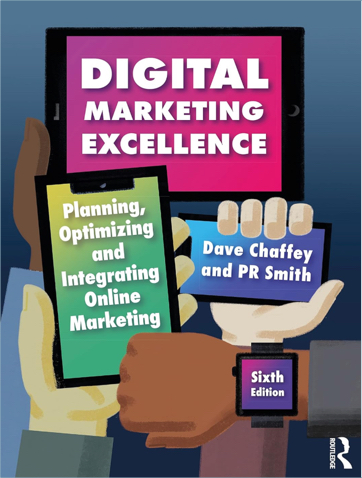What is omnichannel marketing vs multichannel marketing?
Omnichannel marketing is a useful way of higlighting today’s challenge of selecting and managing the many marketing channels that are available to marketers, both for marketing communications and multichannel selling. It is an evolution from the long-standing use of multichannel marketing.
The use of omnichannel marketing to highlight the importance of new digital marketing touchpoints started within retail focusing on customer experience to explain new options for marketing and selling via mobile and social commerce channels.
With the COVID-19 pandemic it’s increasingly relevant for other sectors such as consumer brands and business-to-business providers looking to sell online. It highlights the need for integrated communications planning and acknowledges the complex customer journey many consumers are involved in as shown by our B2B lifecycle marketing visual.

Defining omnichannel
I define omnichannel marketing as:
Planning and optimizing always-on and campaign-focused marketing communications tools integrated across different customer lifecycle touchpoints to maximise leads and sales plus delivering a seamless, integrated customer experience to encourage customer loyalty.
Why do we need omnichannel?
The need for omnichannel marketing is nicely explained by this omnichannel definition from John Bowden, Senior VP of Customer Care at Time Warner Cable. It highlights that omnichannel also refers to the customer experience where customers are using multiple channels, but they rightly have the expectation that their experience is ‘Seamless, integrated and consistent’.
“Multichannel is an operational view – how you allow the customer to complete transactions in each channel. Omnichannel, however, is viewing the experience through the eyes of your customer, orchestrating the customer experience across all channels so that it is seamless, integrated, and consistent. Omnichannel anticipates that customers may start in one channel and move to another as they progress to a resolution. Making these complex ‘hand-offs’ between channels must be fluid for the customer. Simply put, omni-channel is multi-channel done right!”
HubSpot have embraced the term omnichannel marketing to focus on increasing brand communication effectiveness rather than solely retail experience. They define omnichannel marketing as:
Omni-channel marketing seamlessly integrates the different communication channels that businesses use to communicate with customers. This approach uses the customers’ perspectives and interests to optimize the consistency of the company’s marketing messages. By uniting the strengths of each communication channel, marketing teams can use omni-channel marketing to deliver a more consistent and effective brand message.
Their article also gives practical brand examples of this.






